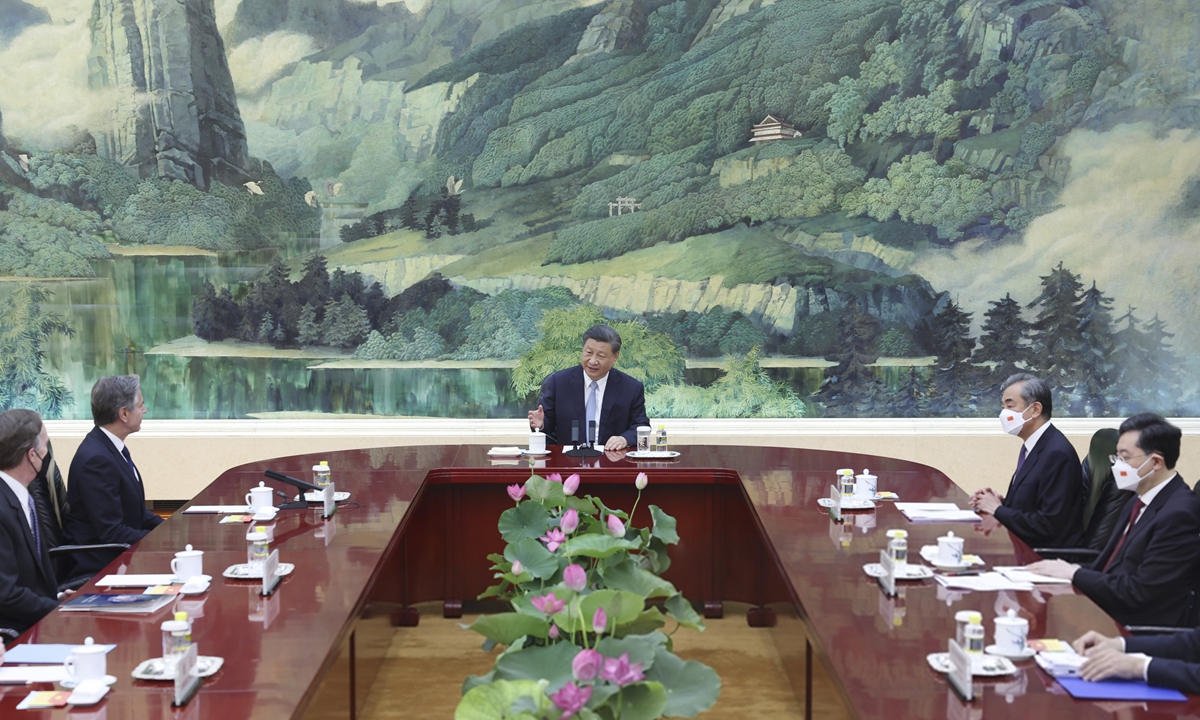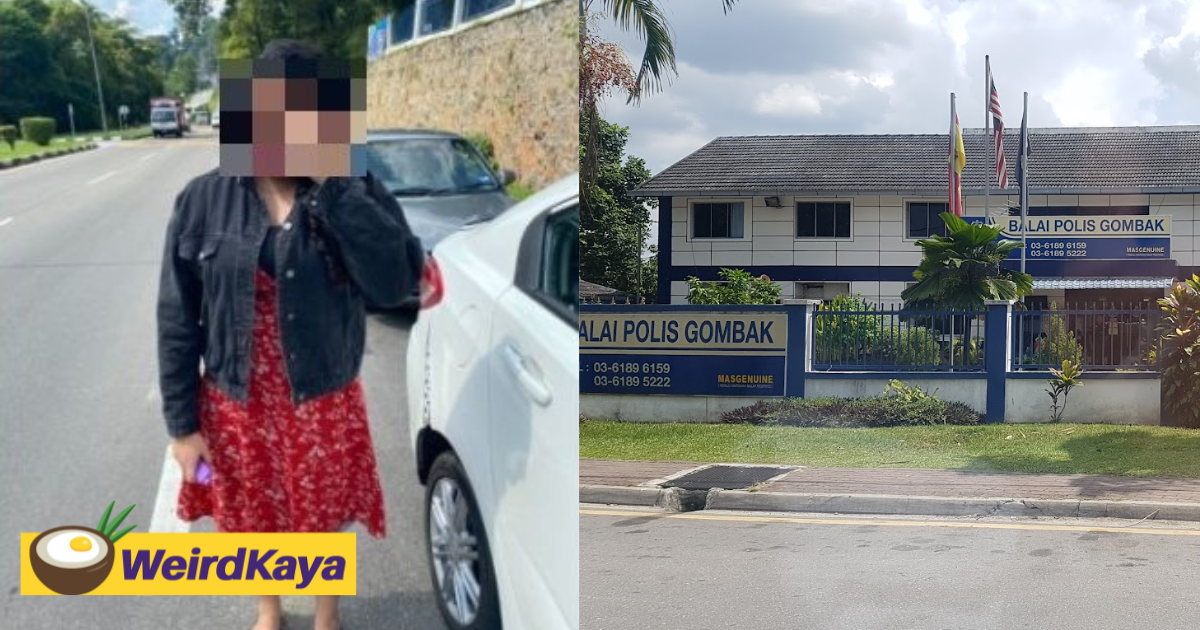A reporter holds a microphone with the logo of ANI during a press conference in India, on March 3, 2023. Photo: VCG
Source: EU DisinfoLab report.Graphic: Global Times
A recent report by a European organization investigating fake narratives of Indian media went viral on Chinese social media platforms recently, drawing wide attention to India's supposedly vast smear campaign against China and Pakistan.
Following reports in 2019 and 2020, the latest investigation report by independent non-profit organization EU DisinfoLab, published in February 2023, exposes more details and evidences to prove that Asian News International (ANI), an Indian news agency, has been quoting a number of non-existent organizations, journalists and bloggers to spread disinformation that attacks and smears China and Pakistan. The report further uncovered that India has long been building a huge anti-China and anti-Pakistan disinformation network and that Indian media outlets have built a sophisticated assembly line of fake anti-China and anti-Pakistan news.
On the one hand, the Indian media produces and spreads false narratives about China, and the Indian government restricts Chinese journalists' access to India and deny their rights of reporting a real India, by treating Chinese journalists in an unfair and discriminatory manner during their posting in India and visa application process.
Chinese experts said the investigation report exposes a deliberate effort by India or Indian media to shape negative narratives against China and Pakistan. The presence of such disinformation campaign aligns with India's strained relations with both countries. They pointed out that the production of fake news by Indian media can incite nationalist sentiment within the country and distract people from the real problems of the country and the poor performance of its government.
Bad sources
The investigation report titled "Bad Sources - How Indian news agency ANI quoted sources that do not exist," published by EU DisinfoLab, unveils "its latest investigation into anti-Pakistan/China influence operations," according to the organization.
The report said ANI is an Indian news agency that plays a relevant role in the country's information ecosystem, providing content for many well-established media across India, such as The Print and Business Standard. With this network, ANI acts as a purveyor of news to millions of Indians.
In the report, researchers write that ANI has been repeatedly quoting articles and reports issued by a think tank named the International Forum for Rights and Security (IFFRAS). The think tank was previously chaired by Mario Silva, a former Canadian Member of Parliament (MP), and dissolved in 2014, according to public information provided on a Canadian government website.
However, when they checked IFFRAS' official website, the researchers found that it has kept updating information, including articles, news, books and even conferences, and that ANI has kept quoting information from the think tank's website.
For example, on December 27, 2022, IFFRAS published an article titled "Pakistan's persecution of minorities under scanner again," and on the same day, the article was quoted by ANI in a piece of news headlined "Pakistan's ill-treatment of minorities under scanner after UK sanctions Sindhi cleric," with most of the contents coming from the IFFRAS article.
ANI has quoted IFFRAS more than 200 times from May 2021 to January 2023, and "in most instances, it was not only quoting but using the IFFRAS 'reports' as the backbone of the articles," said the report.
News reports produced by ANI quoting IFFRAS can possibly get republished or reported on by other media outlets. For example, in April 14, 2022, an ANI report quoting IFFRAS was reproduced by The Statesman, an Indian daily newspaper, allowing the ANI report to reach a wider audience.
In addition, researchers of EU DisinfoLab further investigated whether the conference attendees at the think tank quoted in the articles actually exist.
To find out who was attending conferences held by IFFRAS, researchers contacted attendees of a session discussing the "Increasing presence of Muslim Brotherhood." But two of the attendees mentioned by IFFRAS responded that they had never attended such a conference and that the Muslim Brotherhood "had nothing (to do) with their field of expertise."
The investigation report also pointed out that more than 70 speakers mentioned in the fake conferences of IFFRAS did not exist at all.
Another interesting finding is that, in contrast to the frequent updates on its website, IFFRAS' Twitter account has not posted any content since 2021. Therefore, the researchers assumed that "the sole purpose of IFFRAS is to produce content that can be covered by ANI and then republished widely throughout the Indian press."
ANI's editor Smita Prakash responded to the report on Twitter on February 24, dubbing it "defamatory and false."
The Global Times has tried to contact ANI through the email address provided on its website, wanting to get a response on whether the news agency was aware that IFFRAS had been disbanded in 2014 and does not exist now. However, as of the publication of this report, there was no response from ANI.
Apart from IFFRAS, the researchers also looked into another think tank frequently quoted by ANI, the Policy Research Group (POREG), in which the researchers found no sign of the existence of three new members who had reportedly joined the group in the last two years.
For example, one of them is James Duglous Crickton, a misspelling of James Douglas Crickton, who wrote an article claiming that former Pakistan president Pervez Musharraf held a secret bank account in Switzerland, which was later covered by ANI.
The researchers said that they have tried to get in touch with the three people through POREG, but have received no response. However, the three people had been quoted by ANI numerous times on topics such as Pakistan's army doctrines and China's "wolf warrior diplomacy," according to the investigation report.
The researchers also tried to get contact with Philippe Jeune, a claimed "Paris-based investigative journo with more than 10 years' experience" and sometimes a claimed "Brussels-based freelance journalist," who was quoted by ANI in a piece of news entitled "European Parliament to withdraw Pakistan's GSP+ status over abuse of blasphemy laws" - a withdrawal that did not happen, and efforts to do so again failed.
Asif Noor, founder of the Friends of BRI Forum, a Pakistan-based think tank, told the Global Times that in the investigation, ANI has been found to quote non-existent organizations, presenting them as credible sources of information. The expert noted that by attributing statements and opinions to these fictional entities, ANI creates a false impression of legitimacy and credibility for the disinformation being spread.
These fabricated figures are used as experts to provide opinions and analysis to further mislead readers and reinforce the false narratives. ANI's articles, containing the disseminated disinformation, are reproduced and shared across various well-established media outlets in India, Asif noted. "This amplification of the false narratives through multiple platforms increases their reach and potential impact, potentially influencing a wider audience and shaping public opinion."

Source: EU DisinfoLab report.Graphic: Global Times
Vast network
The IFFRAS think tank mentioned in the lab report was also found to be linked to the Srivastava Group, as the researchers found that IFFRAS has been registered by using a well-known email address from the Srivastava Group.
The latter is a notorious Indian shell corporation, and the EU DisinfoLab pointed out in its 2020 report that nominally, the group's main business is news media, with offices in Brussels and Geneva, and registrations of more than 750 media, think tanks and more than 550 domain names in 116 countries and regions around the world.
However, the researchers investigated and found that there was no profitable business under the Srivastava Group, and the media and think tanks related to the group basically only had a name but no actual business. For example, the researchers uncovered EU Chronicle, a fake media with fake journalists supposedly covering European affairs, which was actually serving as a platform for Members of the European Parliament (MEPs) to sign pro-Indian articles.
In fact, the group is a representative of the disinformation war launched by India against China. Under the lead of the Srivastava Group, which is based overseas in Geneva and Brussels, an information warfare network has been woven, with a number of fake media, think tanks and NGOs all over the world.
The fake news produced by the fake media under the group is also published and reprinted by some Indian media websites such as ANI which increases the reach of the disinformation.
For example, on September 17, 2020, an article was published in the EU Chronicle about a letter sent by several MEPs to the President of the European Council Charles Michel, asking for taking strong actions on China's Human Rights atrocities at the EU-China Summit. The article was titled "Meaningful address and strong action needed against China's human rights atrocities." In its coverage of the news, ANI changed the headline as "Members of the European Parliament urge EU to take strong action on China for Human Rights Violation." But then the coverage of ANI was distorted by the Srivastava Group's other fake media, which ran it under the headline: "EU to take strong action on China."
In the end, a simple request by individual MEPs, who are free to send any letter they want to send, was ultimately presented as an official position of the EU on China.
Represented by the EU Chronicle, fake media of India published a large number of discrediting articles on China and Pakistan in an attempt to damage the reputation of the countries internationally and win more support for India from institutions such as the EU and UN.
In addition, according to the lab's investigation, under India's vast network of fake narratives, many organizations created by the group are active in cities which host headquarters of international organizations, such as Geneva, Brussels and New York. These organizations include "South Asia Peace Forum," the "Baloch Forum" and "Friends of Gilgit-Baltistan."
In order to increase the official element and credibility of their organizations, they even paid some MEPs to make pro-India, anti-Pakistan and anti-China remarks, and organized trips for MEPs to Kashmir, Bangladesh and the Maldives. The researchers noted that "some of these trips led to much institutional controversy, as the delegations of MEPs were often presented as official EU delegations when they were in fact not travelling on behalf of the Parliament."
Responsible dissemination of accurate and verified information is crucial in fostering informed public discourse and upholding journalistic ethics, Asif noted. But India lacks the ability and is using it in favor of its own motivations, the expert said.
Beautify image
Experts noted that China and Pakistan have long been targets of India's disinformation campaign.
Topics related to the China-India border region, including the China-India border issue and China's border negotiation with Bhutan, are a major focus of the India's fabrication and smearing on China.
In addition, discrediting China's Belt and Road Initiative and the construction of the China-Pakistan Economic Corridor, and smearing on China's policies in Xinjiang and Xizang regions in terms of ethnic, religious, human rights and other issues are also the top agenda items set by some forces in India in the disinformation war against China, Sun Xihui, an associate research fellow with the National Institute of International Strategy at the Chinese Academy of Social Sciences, told the Global Times.
With the help of these fake reports, the Indian media not only discredit China, but also try to raise the image of its own government in its community. By building the image of China with social chaos and oppression of people domestically, and deceiving internationally, the India media aimed to beautify India's image of democracy at home and friendship with its neighbors internationally, Sun noted.
The international community's perception of Pakistan and China may be swayed by the misinformation disseminated by India, affecting how these nations are viewed in terms of their policies, actions, and intentions. This can lead to biased judgments and misconceptions about Pakistan and China's contributions to regional and global affairs, Asif said.
To counter false narrative campaigns of India, experts noted that there should be a multifaceted approach involving various strategies. "It is important that China and Pakistan should promote media literacy to educate the public about identifying and evaluating misinformation and disinformation," Asif said.
"Citizens should also utilize social media platforms, official websites, and other digital channels to directly communicate with global audiences," said the expert.
Gary Machado, managing director of EU DisinfoLab, said he thought the muted reaction to the revelation of the disinformation network was partly because it was "clearly managed by Indian stakeholders."
"Imagine if the same operation was run by China or Russia. How do you think the world would have reacted? Probably with international outrage, leading to public inquiries and probably sanctions," he told BBC in an interview in December 2022.



















 Photo via
Photo via 









